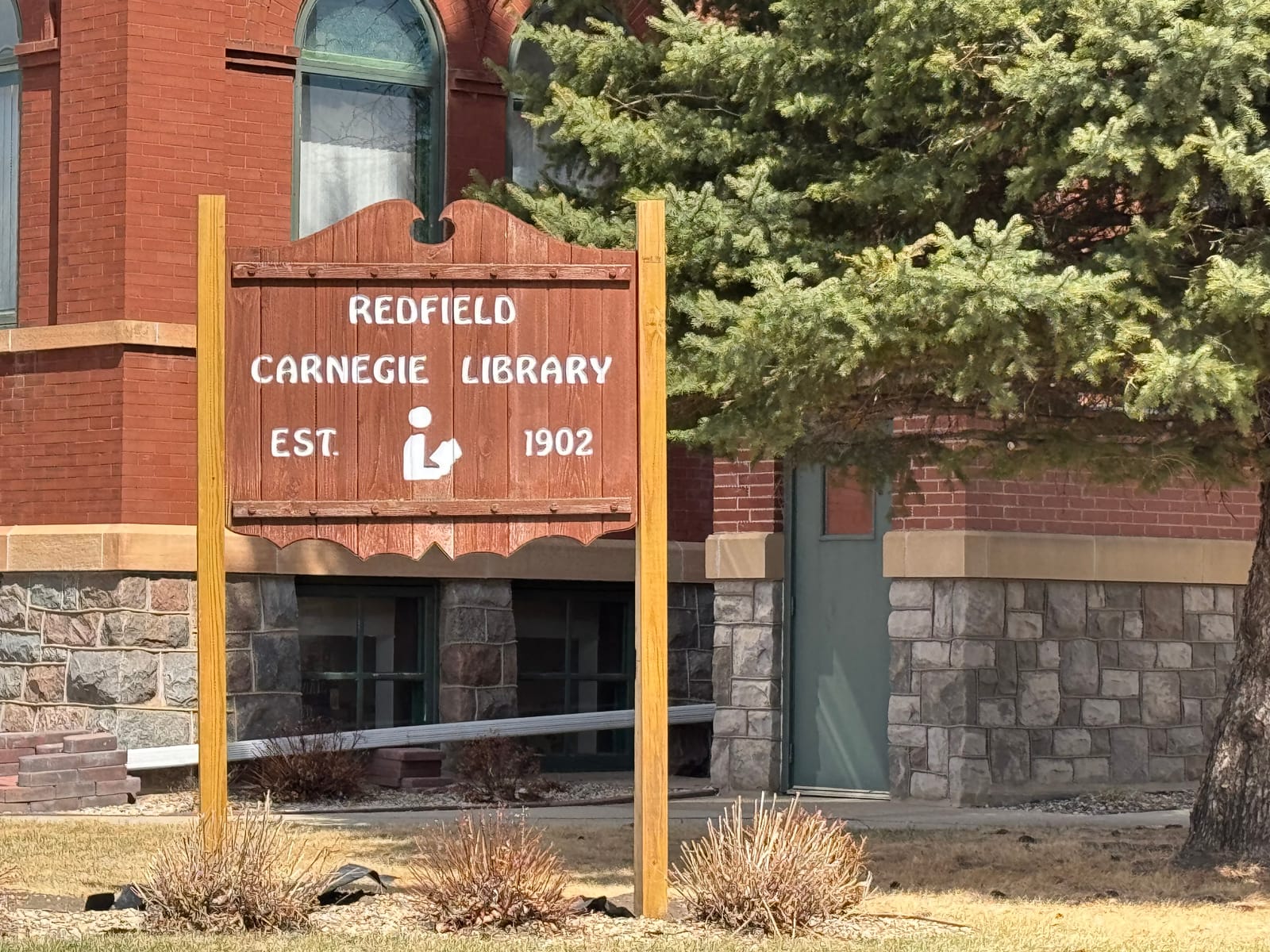
Bart Pfankuch / South Dakota News Watch
REDFIELD, S.D. – On five occasions this year, librarian Sarah Jones-Lutter has left the quiet, comfortable confines of the historic Redfield Carnegie Library and made her voice heard in the uncertain world of politics.
Jones-Lutter made four trips to the Capitol in Pierre and recently flew to Washington to lobby state and federal lawmakers against proposed funding cuts that could hurt libraries in her hometown and across the state.
One of her trips to the Legislature was to testify against a bill, which ultimately failed, that would have imposed criminal penalties on South Dakota librarians who allowed children to view materials deemed harmful to minors.
Jones-Lutter said she’s puzzled why former Gov. Kristi Noem proposed massive cuts to the state library system, which were softened somewhat by lawmakers, and why President Donald Trump signed an executive order gutting the Institute for Museum and Library Services, or IMLS.
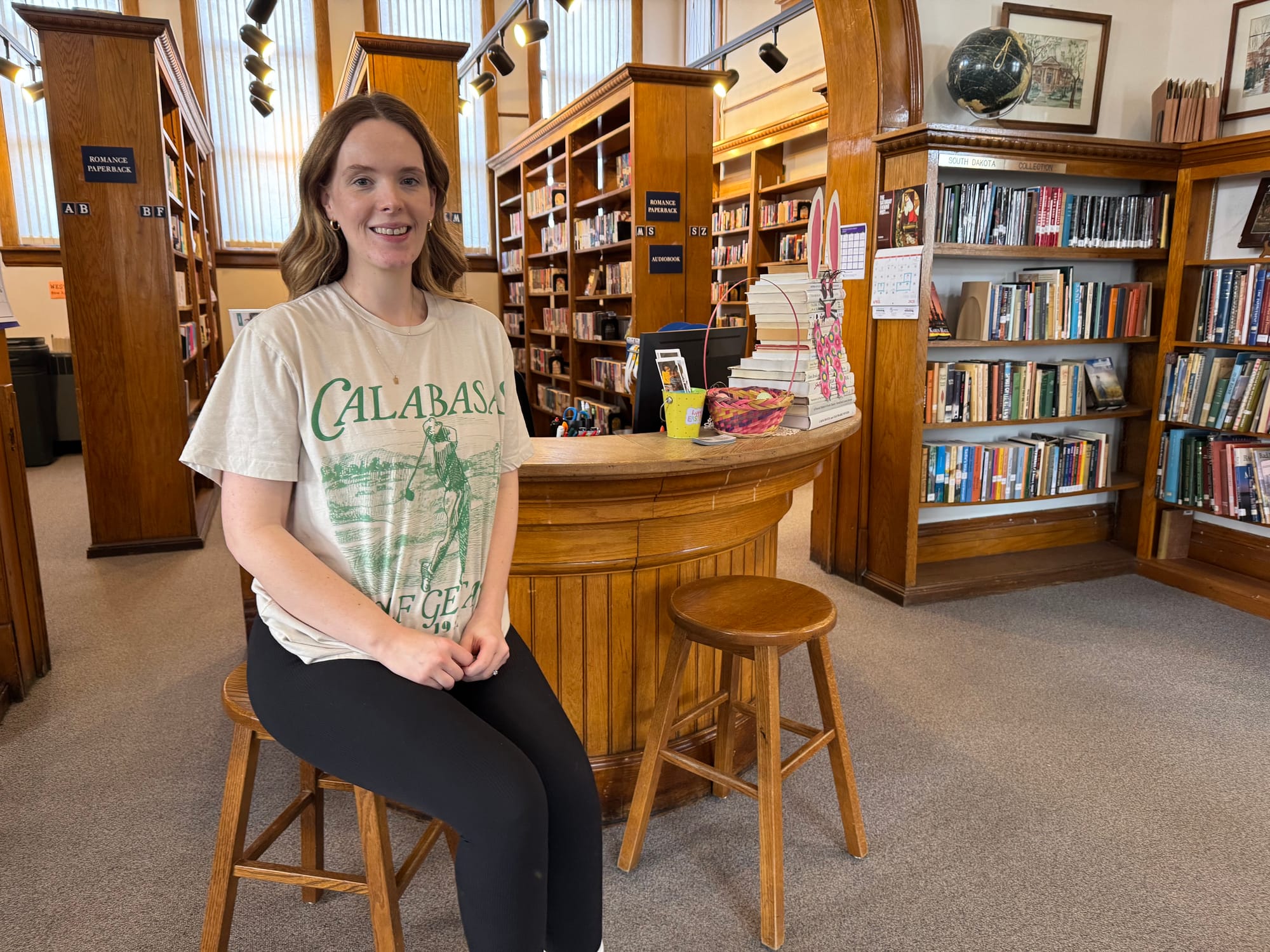
“Maybe they think it’s a waste of funds, maybe they don’t see the importance or they say, ‘People don’t use the library anymore,'” she said. “I just assume they haven’t been to a library in a long time so they don’t know what’s actually going on here.”
Trump said that the order “continues the reduction in the elements of the federal bureaucracy that the President has determined are unnecessary.”
The State Library Association has advised its members that the status of current grants remains unclear. If the administration follows the same playbook it has in targeting other small agencies for closure, IMLS could be shut down.
The agency provides more than $200 million a year to library systems across the country, including $1.3 million to South Dakota.

Jones-Lutter said the modern library in a small city like Redfield, population 2,200, has morphed from a quiet, solemn place existing mainly to check out books into what she said is more of a “community center.” People of all ages and all walks of life can have a no-cost or low-cost, safe place to spend time and access materials while learning, growing and interacting with other members of their community.
“We talk about the so-called third place, which is important,” she said. “It’s when you have a home and your work or school, but you need a third place to go and experience things. And the library can be that place.”
South Dakota library limits access as federal cuts loom
The South Dakota State Library falls within the purview of the state Department of Education, and both are located in the McKay office building in Pierre.
In an interview with News Watch on April 11, state Education Secretary Joseph Graves said he is monitoring the possible federal cuts to the state library, but he added that “we don’t really know what’s going to happen.”
On April 14, the state library closed its doors to the public, except for pre-arranged appointments, DOE spokeswoman Nancy Van Der Weide told News Watch in an email, citing state cuts, not those proposed by Trump.
While lawmakers held back from enacting all of Noem’s proposed cuts, they did ultimately reduce funding of the state library by about $800,000 and eliminated four staff positions.
“The culling and review of collections and materials is not related to federal funding concerns, it is a result of changes made during this year’s legislative session,” Van Der Weide wrote. “We are aware of no decision on IMLS funding for next year. Given that funding cuts are possible, we are holding off on approving contracts for services typically funded by IMLS dollars.”
Federal archival documents housed by the state library are being transferred to the University of Minnesota, which made a request to hold the materials, she said. Other materials will be held in the McKay Building, transferred to the state archives or shipped to local, school or university libraries that will accept them.
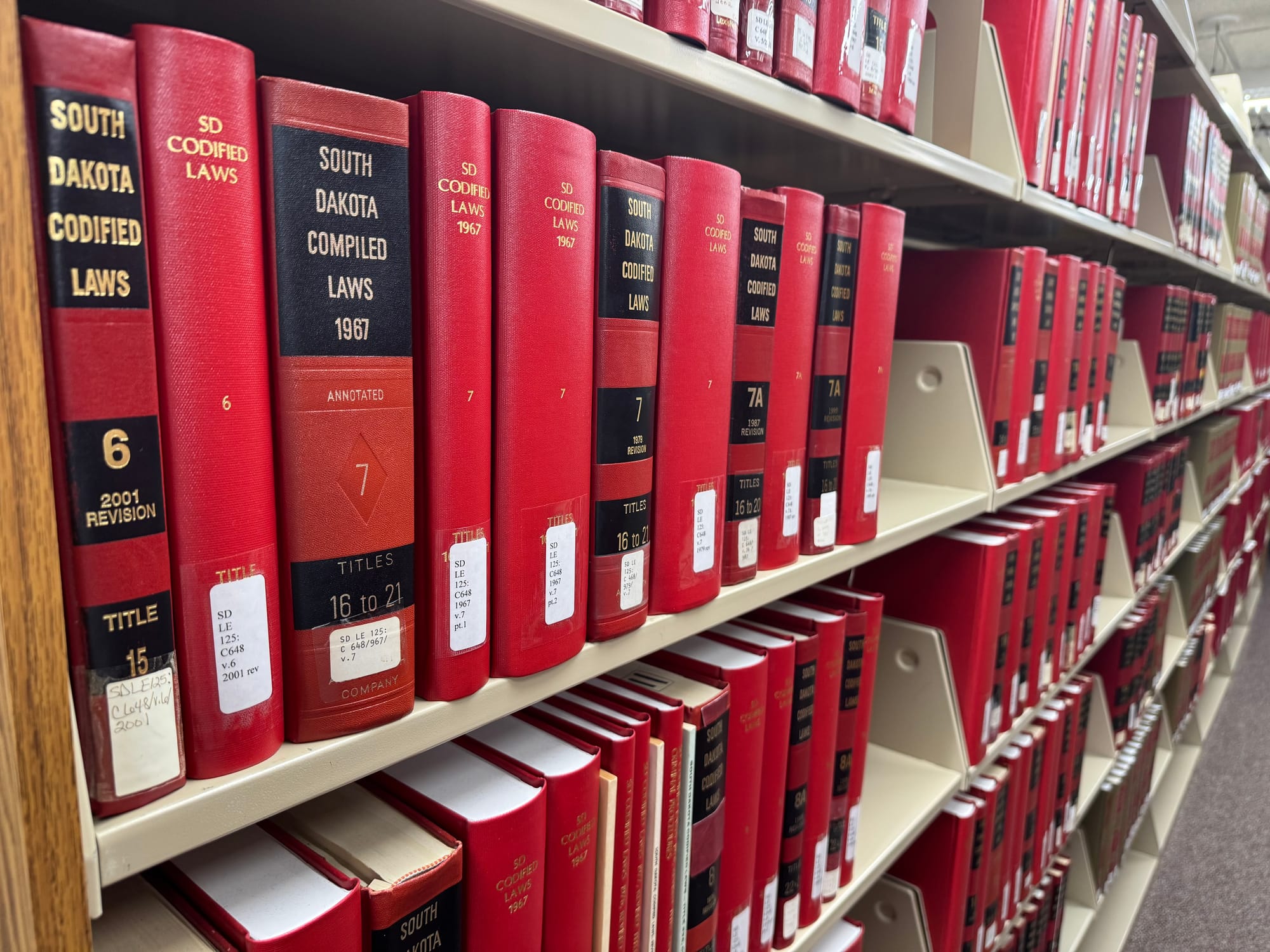
Van Der Weide added, “The State Library will continue to provide services such as the summer reading program, Braille and talking book activities and technical assistance to public libraries and schools.”
Graves said his understanding was that the federal IMLS office had lost all its employees to the ongoing federal job and program cuts. And yet, despite the proposed state and federal funding cuts, Graves said he does not think libraries in South Dakota and the U.S. are being targeted by state or federal officials.
“It’s not an attack, it’s just the latest challenge facing us all,” Graves said. “Everything with libraries is changing, and so many resources are now online, so libraries are changing their mission and asking, ‘How do we move forward in this new world?'”
Bringing people together in Redfield
Jones-Lutter, 34, has a degree in library science and is the only full-time employee at the Redfield library. The library’s roughly $220,000 annual budget is funded by local taxpayers, but she said that like almost all public libraries, programs and materials in Redfield are supported by a hodgepodge of donations, in-kind services and help from the South Dakota State Library.
Any cuts to the state system will hurt local libraries that rely on state offerings of information services or material sharing systems, she said.
“We’re talking about cuts to summer reading, inter-library loan and the databases used by libraries and schools,” she said. “I mean, you can’t balance the state or federal budget by cutting libraries.”
The Redfield library, located in a historic brick building, has been in operation since 1902 and is one of the few remaining South Dakota libraries first launched by industrialist Andrew Carnegie.
In addition to lending out books, offering free Wi-Fi and access to public computers, the Redfield library offers a long list of programs for children and adults.
More than 100 children attend preschool learning programs, summer reading programs or a Lego-based construction club to learn mechanics.
“A lot of these are free activities your child can come to,” she said. “How many free things are out there where your children can come on their own to read and learn and have a lot of fun?”
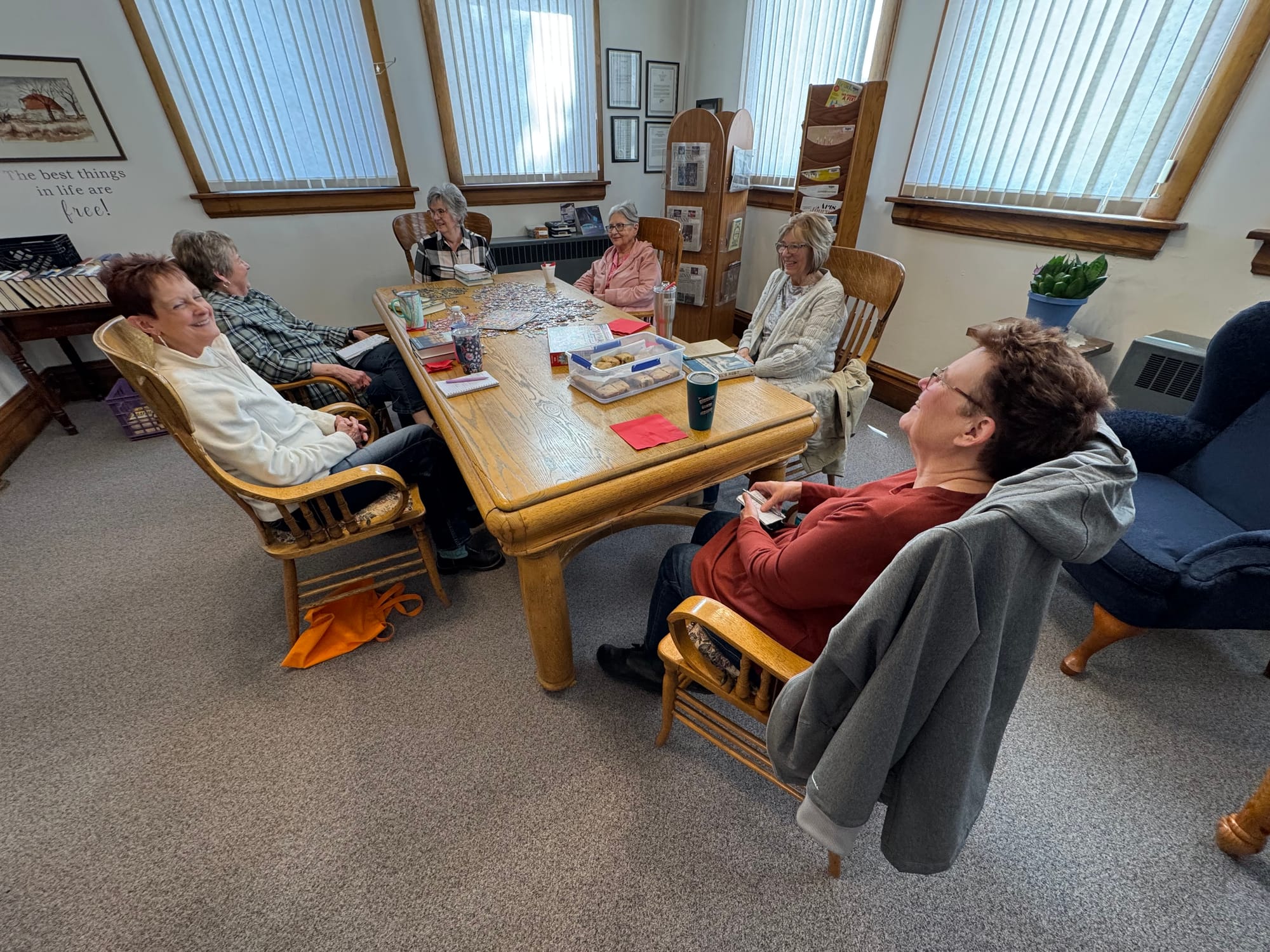
Adults can attend a book club, and homebound individuals can get materials delivered to them on a weekly basis.
Jones-Lutter uses her own money to buy coffee and “blondie” bars or cookies to serve to adult patrons who attend a monthly book club called “Sweet Reads.”
Sharon Eldeen, 81, has been a regular user of the Redfield library since she moved to town in 1968 and calls the library a “stupendous resource.” She takes pride also in the fact that some of her watercolor paintings are displayed on the library walls.
Eldeen and a handful of other women sat at a rectangular oak table in the library on April 10 and talked about books and other topics during the most recent “Sweet Reads” gathering.
Eldeen said it would be heartbreaking if the library in Redfield or in other South Dakota cities and towns were to lose funding that helps support activities and personnel. “We’d be lost without our local library,” she said.
Library like a local ‘coffee shop’
On a recent weekday, Cynthia Charest, 65, used a computer in the Mitchell Public Library to gain free access to the internet to catch up on the news. Charest said she would “grieve” if her local library or others across the state underwent budget cuts that led to reduced services or limited access to books and technology.
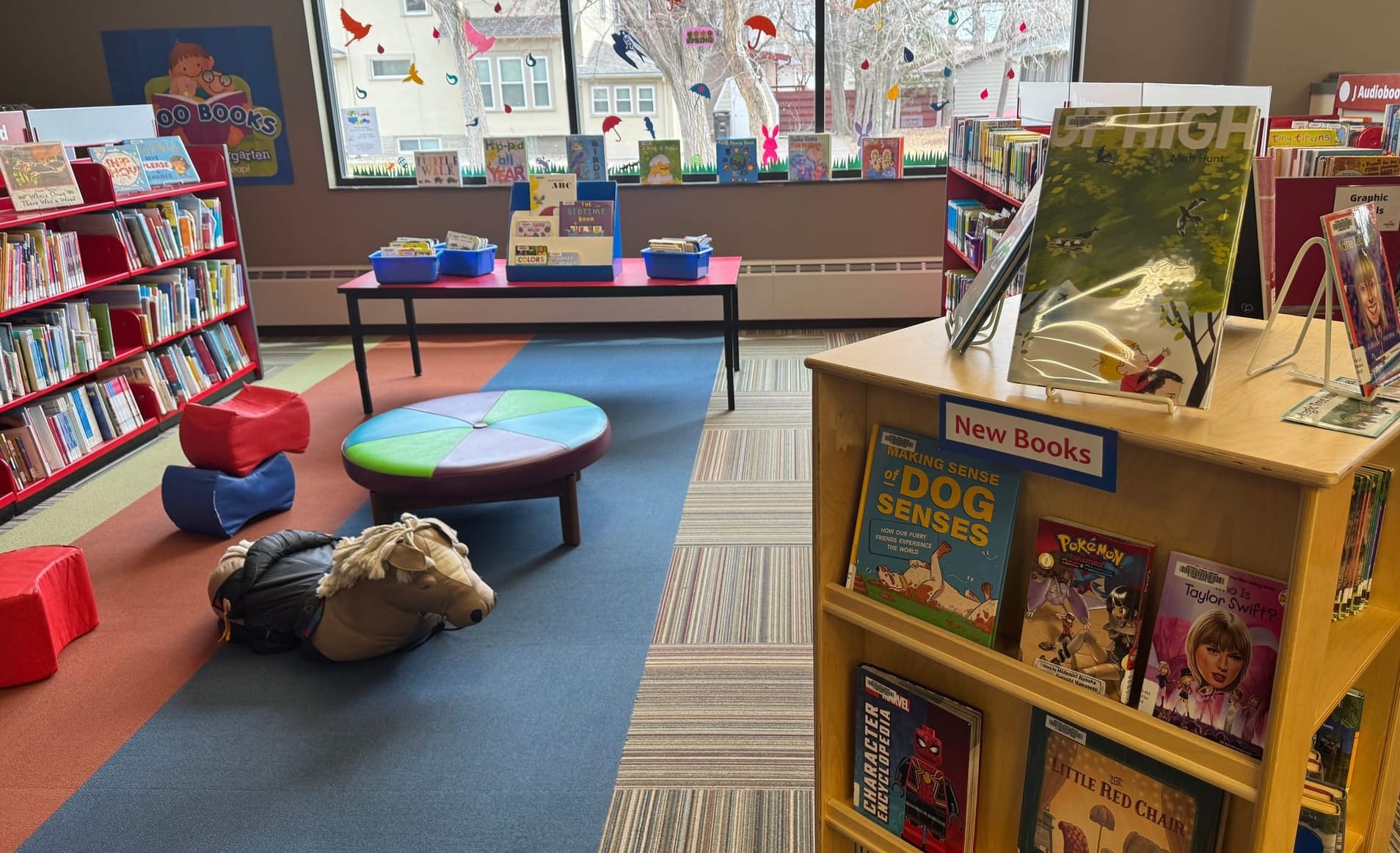
Charest said she started visiting her local library as a child and has made it a part of her life wherever she has lived. “It really increased my love for reading and it got me into writing,” she said.
Charest said she has watched as public libraries have evolved over the years from quiet places to read and check out books to vibrant settings where people can chat, learn, expand their minds and find new friends.
“It’s great for parents with children. And for elderly people, we can become isolated, so this provides a place to be part of a community,” she said. “Really, the library for me has become more of a coffee shop these days.”
Responding to community needs
Kevin Kenkel has served as director of the Mitchell Public Library for the past five years. Patron activity has increased over that time, except during the COVID-19 pandemic in 2020, he said. Circulation of materials and visitor counts have surpassed pre-pandemic levels during the past two years.
Library story time events that include reading aloud and a crafting session attract up to 50 people every Thursday and on alternating Saturdays. That high level of attendance, Kenkel said, is evidence that reading remains important to local families and that the library is still seen as a place where that skill can be developed.
“It helps with literacy and language acquisition,” he said. “It’s a critical part of language development in children, and adults for that matter.”
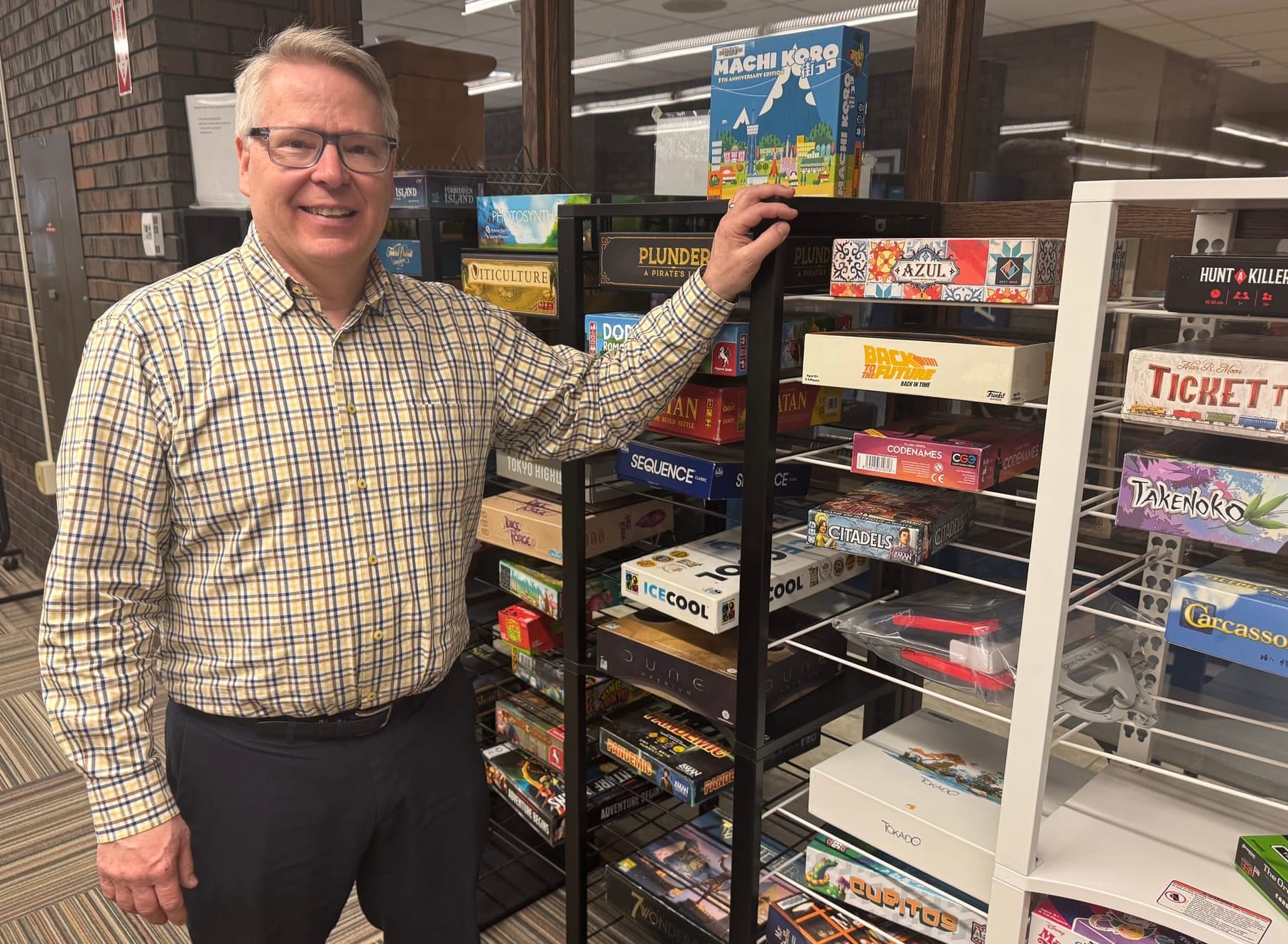
But Kenkel notes that the library in Mitchell has become more responsive to the needs of the community. After hearing from patrons, the library purchased dozens of board games that can be checked out and now lends out a telescope for home use. Some libraries have begun offering power tools to be checked out for home improvement projects, Kenkel said.
Local taxpayers provide the Mitchell library with almost all of its $900,000 annual budget that supports seven full-time and six part-time employees, he said.
Kenkel publishes a quarterly report called “Between the Pages” to update the community on library happenings, new arrivals and other news. In the spring 2025 edition, he informed the public about the proposed federal cuts and listed 10 ways that reductions in IMLS funding would restrict services.
Dozens of online databases would no longer be available to schools and libraries, he said, and cuts could reduce offerings of inter-library lending services, summer reading program offerings and the ability to bring in speakers to share important information with the community.
Kenkel also is concerned that the full state library funding cuts proposed by Noem this year could be revived during next year’s legislative session.
Any funding cut at the state or federal level to the state library would require local libraries to ask for more taxpayer money or to reduce offerings if local replacement money isn’t available, Kenkel said.
“All libraries in South Dakota benefit from the state library receiving federal funds, so we would lose out on access to those databases and other services,” he said.
